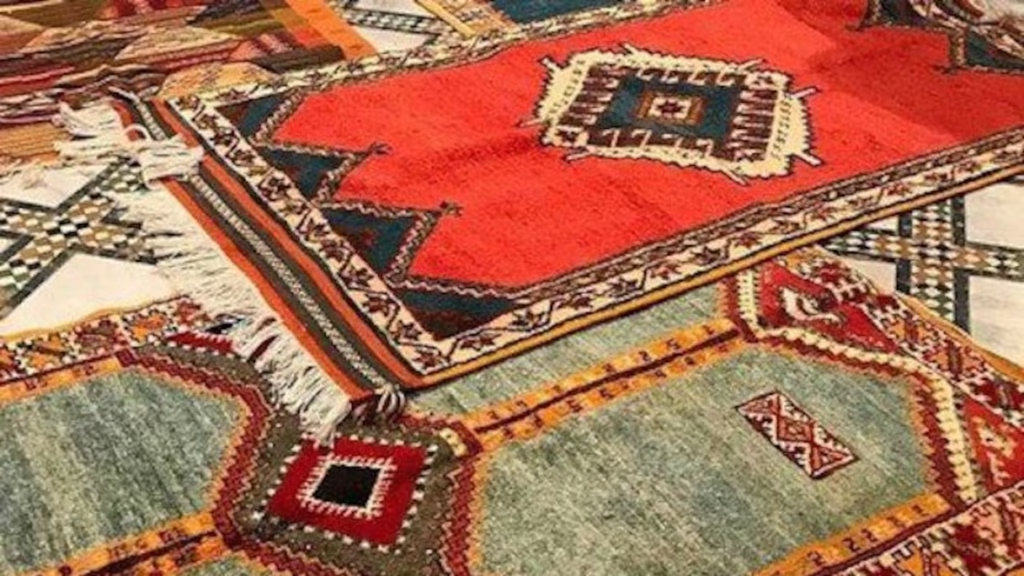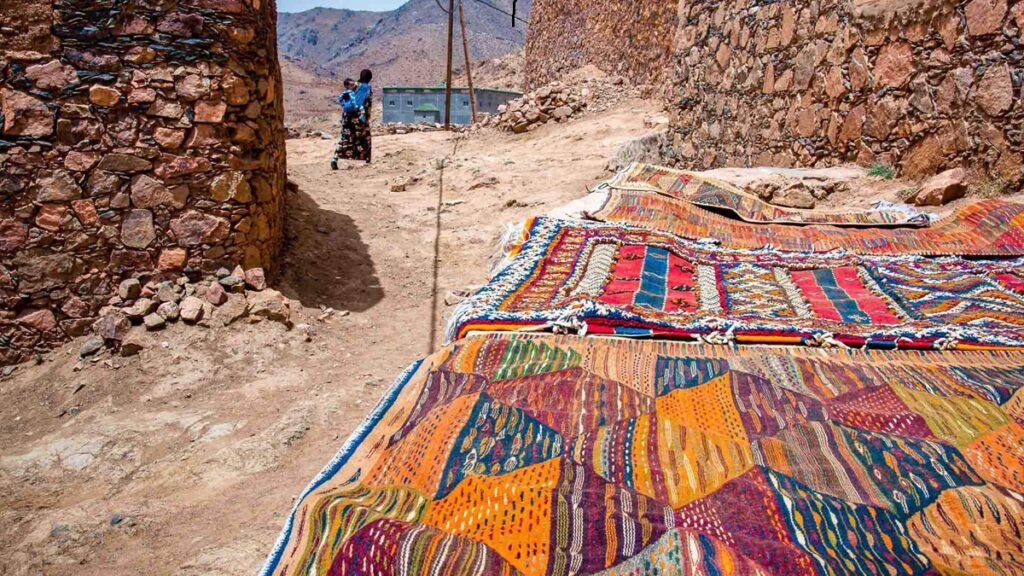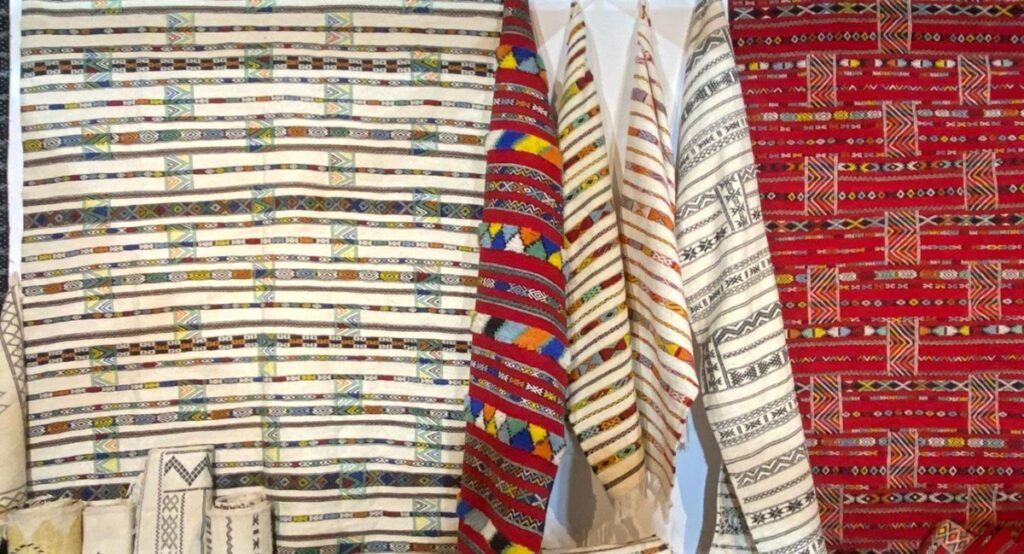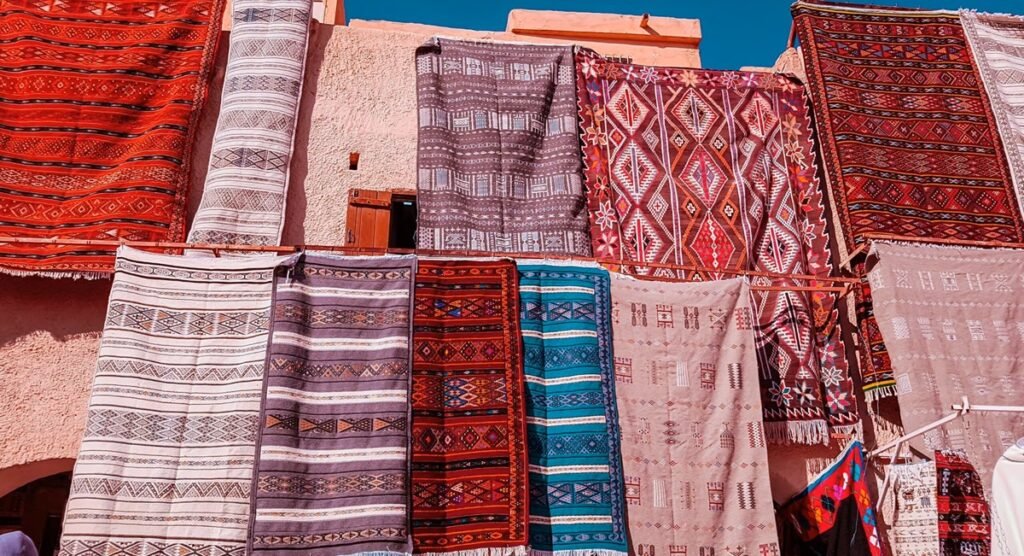Moroccan carpets: threads that weave the memory of the place and open the paths of modernity.

No visitor to Morocco can miss the Moroccan rug, a piece of art that combines the warmth of home with cultural depth. It is not merely a traditional product displayed in markets or exhibitions, but a living testament to a long civilizational journey woven by women with their fingers, passed down through successive generations as a collective memory and a means of artistic and social expression. With its lines, colors, and symbols, the Moroccan rug reflects the relationship of the Moroccan people with their natural and cultural surroundings, while simultaneously highlighting the ability of heritage to open up to modernity and the global economy.
The historical origin of Moroccan carpets

The roots of carpet weaving in Morocco go back centuries, during which time this craft was associated with the Amazigh and Arab communities living in the mountains, plains, and countryside. Carpets were not merely a decorative item or a daily item, but rather an essential component of Moroccan family life.
In the High and Anti-Atlas, where the landscape is harsh and the climate is cold, the rug was a means of protection from the bitter cold. Over time, however, it transformed into a means of artistic expression of the local environment and culture. The colors extracted from plants (henna, pomegranate peels, madder, mountain herbs) were not arbitrary; rather, they carried symbols linked to daily life and social rituals.
Carpets were also associated with family and religious rituals, as they were woven for special occasions such as marriage, birth, or seasonal celebrations. Over the generations, each region in Morocco has acquired its own distinctive "signature" that distinguishes its carpets: the Taznakht carpet is known for its bright colors and the quality of its wool, which is extracted from the Sarwa Mountains; the Zemmour carpet is distinguished by its geometric precision; while the "Mrahia" carpet from the Chaouia region carries a symbolic character that reflects its connection to the countryside.
Cultural and symbolic dimension

The Moroccan rug is not just a traditional product; it is a visual language carrying profound social and cultural connotations. The geometric shapes, vertical lines, and recurring symbols are not random motifs, but rather messages that translate the weaver's vision of her world.
Red, for example, symbolizes strength and life, yellow reflects the warmth of the sun and the fertility of the earth, and blue evokes the sky and spirituality. These three colors form the foundation of the weaving, but the creativity of the weavers has allowed them to continually evolve, adding new colors without compromising their authenticity.
Because women are the primary actors in this craft, the rug has become a space for self-expression. Many weavers consider it a "diary" in which they record feelings of joy, sadness, anticipation, and love. These are paintings charged with human meaning, yet at the same time, they reflect a collective belonging and a shared identity.
This cultural dimension has made Moroccan carpets a subject of interest to researchers and artists, as they contain elements of folklore, music, and religious and social symbols. Consequently, they are not simply a piece of household furniture, but rather a "heritage document" that embodies the memory of Moroccan society.
Economic dimensions

In recent decades, Moroccan rugs have moved from the local home to international markets. They have become a product marketed at national and international exhibitions and have become a primary source of income for thousands of women in Moroccan villages.
The Moroccan government, in turn, has worked to protect this craft from extinction, through various programs, including the establishment of... Role for professionals Distributed throughout Morocco, they provide spaces for production, training, and marketing. These centers help weavers bypass middlemen who previously purchased carpets at low prices and resold them at double the price.
In addition, it was recorded A collection of collective certification marks and quality badges In the Moroccan Intellectual Property Office, as well as in European and American institutions, Moroccan carpets are protected from international piracy. This legal recognition has given the carpet a place in the global market as an authentic product with cultural and economic value.
Although the traditional industry faces strong competition from cheaper mechanical industrial products, demand for hand-woven carpets remains strong, especially among foreign tourists and those interested in luxury décor. Combining artistic authenticity with practicality, they are in demand in European, American, and Asian markets.
Current challenges
Despite the efforts made, Moroccan carpets face major challenges that threaten their continuity:
- Weak interest of the new generationMany young Moroccans no longer see carpet weaving as a profession with a future, threatening to disrupt the intergenerational chain of inheritance.
- industrial competitionThe entry of cheap synthetic carpets into local and international markets places traditional carpets in a difficult position in terms of prices.
- Marketing and InnovationMarketing avenues are still limited in many rural areas, making it difficult for the product to reach wider markets.
- social changesMigration from villages to cities has led to a decline in the number of women practicing the craft, putting the heritage at risk of extinction.
Future prospects
Moroccan carpet is not just a traditional industry, but it is National heritage It combines authenticity and functionality, and holds tremendous economic and cultural potential. Preserving it requires a comprehensive strategy that combines:
- Formation and framingBy integrating the craft into vocational education and training programmes.
- Innovation and renewalBy introducing modern designs that respond to the taste of the modern consumer while maintaining authenticity.
- digital marketingOpening new markets through e-commerce and global platforms.
- cultural awarenessTo instill the idea that carpets are not a fading past, but rather part of a national identity that can be renewed.
With this approach, the Moroccan rug can maintain its status as a cultural symbol while simultaneously transforming itself into an economic lever for rural women and a bridge for cultural communication between Morocco and the world. Ultimately, it is a thread that weaves the memory of a place and opens the way to modernity.





